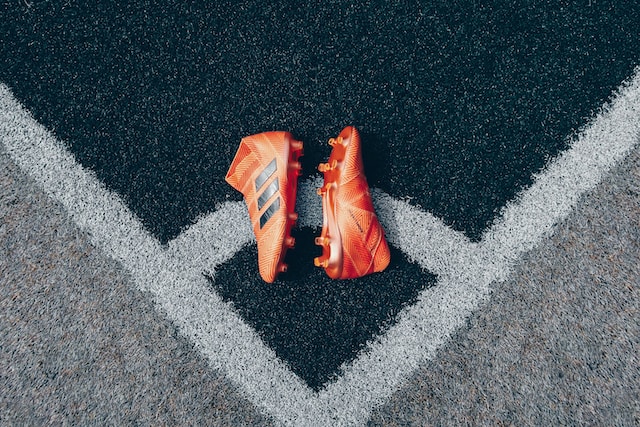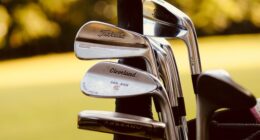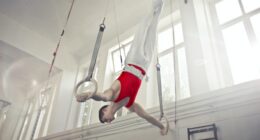Turf cleats are designed for artificial surfaces like turf or synthetic grass while regular cleats are ideal for natural grass fields. Choosing between regular cleats and turf-specific models depends on a variety of factors including personal preference, playing style, and field conditions. Players should consider all options before making a decision in order to ensure optimal performance on game day.
What are turf cleats?
(Photo By dennis crowley on Flickr)
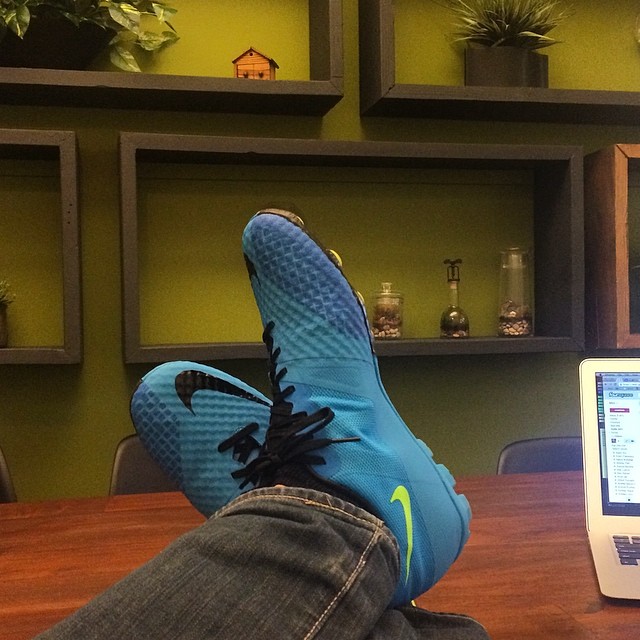
Turf cleats are shoes designed specifically for playing on synthetic turf surfaces. Unlike regular cleats, which have longer and sharper studs that can dig into natural grass, turf cleats have shorter and flatter rubber studs or nubs that provide better traction on artificial turf. Turf fields can be more abrasive than traditional grass fields, so the design of these cleats helps to prevent excessive wear and tear on the playing surface.
Turf cleats also tend to be lighter in weight than regular cleats, making them a popular choice among players who value speed and agility. They often feature a low-cut design for enhanced mobility and flexibility. The materials used in their construction may also differ from those found in traditional soccer shoes, as they need to be able to withstand the rougher conditions of synthetic turf.
While originally designed for use on artificial turf fields, some athletes may choose to wear turf cleats on other types of surfaces as well due to their lightweight design and comfortable fit. However, it’s important to note that wearing them on non-turf surfaces can lead to reduced traction and increased risk of injury.
What are regular cleats?
(Photo by Gonzalo Acuña)
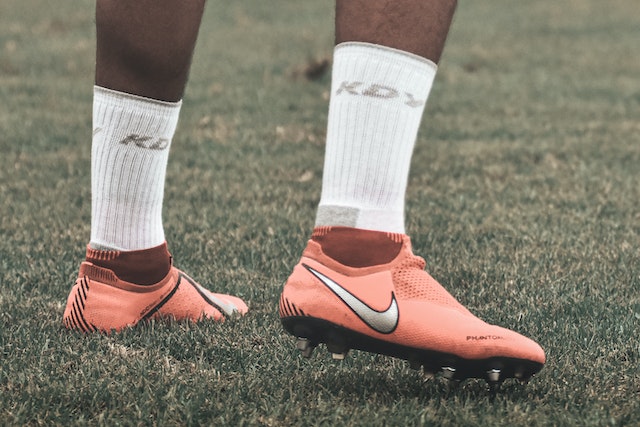
Regular cleats are shoes designed for sports that require players to make sudden stops, cuts and turns. These shoes feature studs or spikes on the sole that provide traction on natural grass surfaces. The spikes come in different lengths and shapes depending on the sport, with soccer cleats having longer and sharper ones than baseball cleats.
Regular cleats are typically made of leather or synthetic materials such as mesh, and they have a tight fit to prevent slippage inside the shoe. They also often have added padding for comfort during play.
These types of cleats are ideal for outdoor sports played on natural grass fields such as soccer, football, baseball and lacrosse. However, they can be uncomfortable when worn off-field due to their hard soles and unique design.
It is important to note that regular cleats should not be worn on artificial turf surfaces as this can damage both the field and the shoe’s studs. Instead, players should opt for specialized turf shoes or sneakers with flat soles suitable for playing on artificial turf surfaces.
Turf cleats Vs. Regular cleats – Key differences
Turf cleats and regular cleats are designed to serve different purposes. While they may look similar, they have distinct differences that set them apart from each other.
One key difference is the type of surface each one is designed for. Turf cleats are specifically made for synthetic turf surfaces, while regular cleats are designed for natural grass or dirt fields. The studs on turf cleats are shorter and flatter than those found on regular cleats to provide better traction and prevent damage to artificial turf surfaces.
Another major difference between these two types of shoes is their construction. Turf shoes typically feature a rubber sole with small, nub-like protrusions that provide grip on the field. Regular soccer/cleated shoes usually have more substantial soles made of materials like TPU or Pebax with longer studs for added traction in natural conditions.
There’s the matter of comfort – soccer players must wear comfortable boots which suit their style of play best because discomfort could be detrimental during gameplay- especially when playing at high levels where every advantage counts!
When to wear turf cleats?
Turf cleats are specifically designed to provide traction and stability on artificial surfaces such as synthetic turf and indoor courts. They have shorter, rubber studs that are evenly distributed across the sole of the shoe, which allows for quick changes of direction without damaging the playing surface.
If you play sports like soccer or football on artificial turf, then turf cleats would be a great option for you. The short studs will grip onto the surface and give you better control over your movements while running and making sudden stops.
Turf cleats are also suitable for other activities like field hockey, lacrosse, and baseball when played on artificial turf fields. These types of shoes can help reduce injuries caused by slipping or falling because they provide excellent traction on these slippery surfaces.
However, it’s important to note that wearing turf cleats on natural grass is not recommended since it may cause damage to both the shoe’s studs and the playing surface itself. Therefore, always make sure to wear regular cleats if you’re playing sports games outside with natural grass fields.
Wearing turf cleats is ideal when playing sports such as soccer or football on an artificial surface where traditional spikes could potentially damage it.
When to wear regular cleats?
Regular cleats are designed with longer and sharper studs that offer better grip on soft, natural surfaces like grass. They are ideal for playing soccer or football games on wet and muddy fields as they provide players with the necessary traction to maneuver through these conditions.
If you’re playing on a regular field that has natural grass, then regular cleats would be your best option. Regular cleats also offer more stability when running at high speeds since they penetrate deeper into the ground providing better balance.
However, it’s important to note that wearing regular cleats on artificial turf can be dangerous as it may cause injuries due to excessive traction and twisting of the ankle. Also, using regular cleats on hard surfaces like concrete or asphalt can lead to faster wear and tear of your shoes’ studs.
If you’re a player who frequently plays outdoor sports like soccer or football on natural grass fields, then investing in a good pair of regular cleats is essential for optimal performance and safety.
The advantages and disadvantages of turf cleats?
Turf cleats are a popular choice for athletes who play on synthetic turf surfaces. They have some advantages over traditional cleats, but also come with their own set of drawbacks.
One advantage of turf cleats is that they provide excellent grip on artificial surfaces. The small rubber studs or nubs on the sole of the shoe give players better traction and prevent slipping. This can be especially important in wet weather conditions.
Another advantage is that they are typically lighter and more flexible than regular cleats, which can help with agility and speed on the field. Turf cleats also tend to be more comfortable to wear because they don’t require as much breaking in as traditional cleats do.
However, there are also some disadvantages to using turf cleats. One major disadvantage is that they aren’t suitable for all types of playing surfaces. Using them on natural grass or other hard surfaces can cause excessive wear and tear on the shoes, leading to faster deterioration.
Additionally, since turf cleats have shorter studs than traditional ones, they may not provide enough support for players who need extra stability or ankle protection while running or cutting sharply.
It’s important for athletes to carefully consider their playing surface and individual needs before choosing between turf and regular cleats.
The advantages and disadvantages of regular cleats?
Regular cleats offer several advantages for athletes playing on natural grass surfaces. They provide excellent traction and stability, allowing players to make quick turns and sudden stops without slipping or losing their balance. Additionally, they are designed with longer studs that penetrate into the ground, providing better grip and preventing sliding.
However, one major disadvantage of regular cleats is that they can cause damage to artificial turf surfaces. The longer studs can catch in the synthetic fibers of the field and tear them out over time, leading to costly repairs or replacement of the playing surface. Regular cleats also tend to be heavier than turf-specific models, which may impact a player’s speed and agility on the field.
Another potential drawback of regular cleats is that they may not perform well in wet or muddy conditions. While some models are designed with water-resistant materials or anti-slip features, others may become slick when exposed to moisture.
Featured Image By – Fachry Zella Devandra on Unsplash
